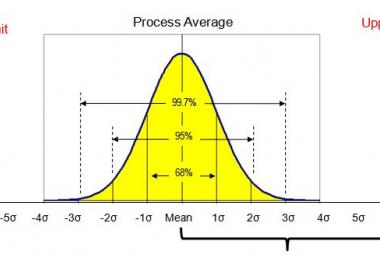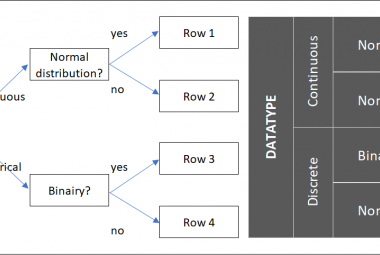Learning to See, written by Mike Rother and John Shook, is the book to read for Value Stream design. In every Lean implementation, it is important to understand the current process design and the way the design influences the flow of products through the factory. After understanding the current state of production a structured approach is needed to get to an improved, future state of the value stream. Traditionally in value stream design, a team thinks of random improvements to reduce inventories or increase throughput, which can result in a lot of kaizen events which hardly really improve the bottom line results.
This article will focus on the most important part of Learning to see: the seven steps structured approach for designing the Future state Value Stream Map.
There are 7 GUIDELINES FOR DESINGING THE FUTURE STATE VSM, which follow a structured way of improving the current state, starting at the customer side of the Value Stream, moving up from right to left (customer to supplier) and from the bottom to the top (material flow to information flow).
- Step one is to define the Takt Time, the speed in which the customer(s) demand your product. This is the first step in value stream design because, according to Lean principles, you would only want to make exactly what the customer demands, in the quantity it is demanded, at the time the customer demands it. Takt time is calculated by dividing the total available production time in a certain time period by the number of products the customer demands for that value stream of the same period. This will tell you how many products need to be produced in for instance a day or a shift.
- After it is determined how many products should be delivered, it is possible to determine the way inventories are controlled. In step 2, starting at the customer side, we move upstream and ask ourselves at every inventory triangle: can we get rid of this inventory by implementing one piece flow between this and the previous workstation? One piece flow means that workstation 1 hands over a finished product to workstation 2 to work on. In the VSM, this means that the two process boxes can be taken together in one process box and the inventory will automatically be maximal one between workstations.
- When one piece flow is not possible and it is therefore not possible to get rid of the inventory, step 3 describes to check whether or not we can transform the triangle into controlled inventory. Again, from right to left, all triangles are observed and the question is asked: can we transform this inventory into a FIFO lane or a Supermarket?
A FIFO-Lane (First In First Out) is a structured inventory with a defined maximum number of products. FIFO means that the downstream process works on the products in exactly the same sequence as the products are put in the FIFO by the upstream workstation(s). FIFO is a pull system because the upstream workstation can only produce when the maximum number of products in the FIFO has not been reached jet.
When FIFO is not an option, the last possible option is the Supermarket. The name is chosen because the principle is based exactly on the system that is implemented in a supermarket. Products are taken out of stock by customers and a signal goes upstream to replenish these parts. The supermarket is less preferable than a FIFO because the downstream workstation can take any product it likes from the stock; therefore there is no fixed order of production of products like in the FIFO lane. A supermarket is still a pull system though, because the upstream workstations produce only the products that are taken from the supermarket by a downstream workstation. One way of managing a supermarket is by using Kanban.
A FIFO line is preferable over a supermarket because it runs dry when there is no demand. The upstream machine will not know what to produce when a spot becomes free in the FIFO. In the supermarket, the upstream machine will replace the part that was taken from the supermarket, whether there is customer demand on that moment or not. - After all inventories are either taken out of the value stream or transformed into pull inventories, step 4 described the determination of the Pacemaker process. The word pacemaker refers to the best possible situation in which one workstation determines the pace for all workstations in the value stream. In the ideal Value stream, this one workstation receives a production schedule and all other workstations follow automatically. The pacemaker process is, looking from right to left, the first process one sees behind a supermarket. Machines that work in one piece flow and behind a FIFO lane do not need a production schedule, since they will simply work on the product that is given to them by the previous station or the next product waiting in the FIFO. Only the process behind the most downstream supermarket needs to know what products to build, so that station needs a production schedule.
In an ideal Value stream, where all process steps are either in one piece flow or connected with FIFO lanes, the pacemaker process is put at the most upstream machine, right behind the raw-materials supermarket. - When it is determined where the production schedule is sent to in step 4, it is time to determine what the schedule looks like. Step 5 describes Leveling the Production mix, to keep the variation (or Mura) in production as small as possible. The Lean tool which is used to define the leveling is Heijunka. The most important part of leveling the production mix is the interval in which products are produced. This interval determines how long it takes to replenish a part taken from a supermarket and therefore directly influences the size of the supermarket.
- After determining the production mix in the line, the next step is to determine the amount of work quantities which can be managed during production. In Lean terms this is called the Pitch. Independent of the production mix, a production schedule could be send to the pace maker process for the next hour or maybe even 20 minutes. Every Pitch, or interval, it can be checked whether or not the process met its demand for that short period or not. Also, since only small amounts of work are released into the line, the schedule can still be changed due to changes in customer demand, as long as it still fits the production leveling mix. Since the pacemaker only knows what it will produce in the next pitch, he won´t even notice changed made in the daily schedule or even a change in the schedule for the next hour. The Pitch can be visualized using the Heijunkabox.
- The last step in the future state design is to improve step 5 and 6, by reducing change-over times. The shorter the change-over times are between products, the shorter the EPEx of the production wheel (heijunka) can be (which means supermarkets can be replenished faster). This will lead to more flexibility in scheduling the pitch and problems will show up earlier because of shorter pitch times. The Lean tool to use for reducing Change-over times is SMED (Single Minute Exchange of Die).
These 7 steps in Value Stream design will help transform a value stream into a more flexible production line with as less waste as possible. Focus is put on what the customer demands, inventories are eliminated where possible or reduced to the level that satisfied customer demand, and the production schedule is optimized for highest flexibility and is send to as little workstations as possible.
Of course, these 7 steps are not just a one-time thing. It is possible that customer demand, product design or even technology changes. The value stream should then be analyzed again to see if further improvements are possible.
Lean Books interesting?
Continue To:
SOURCE:
Rother, M., Shook, J., 1999, Learning To See - Value Stream Mapping to Create Value and Eliminate Muda, Brookline, Massachusetts: Lean Enterprise Institute (order this book)












